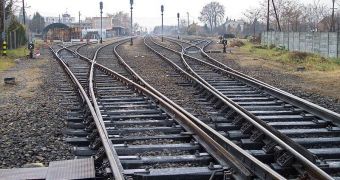Oddly enough, many countries around the globe are currently engaged in railroad repair work, attempting to replace millions of miles of tracks that have been left in decay over the years. However, one of the most pressing questions about the repairs, and one that is among the last to intuitively leap to mind, is whether repair teams should use concrete or wooden ties, the structures that support the railroad itself (also known as sleepers). Producing such vast amounts of material will certainly make a dent in the environment, but experts seem to agree that going with concrete is the most eco-friendly way of repairing the tracks.
Scientific reports have concluded that the greenhouse gas (GHG) costs associated with producing concrete sleepers are about six times lower than if the ties were made of wood. One of the most intuitive reasons for this is that you have to cut trees in order to make the supports. And trees, in addition to the fact that they produce oxygen and keep our planet alive, also store important amounts of carbon dioxide, which would otherwise be emitted into the atmosphere, ScienceDaily reports. Estimates show that, when comparing equal quantities of wood- and concrete-obtained sleepers, the first category far exceeds the latter, as far as pollution goes.
In a new study, entitled “Greenhouse Gas Emissions Embodied in Reinforced Concrete and Timber Railway Sleepers” and published in a recent issue of the journal Environmental Science & Technology, expert Robert Crawford shows that concrete ties also work better because they are more durable and strong. They are also less prone to rotting or deforming over the years, which means that, in the long run, companies engaged in the repairs could save significant sums of money. Critics to the concrete structures argue that the GHG costs involved with making the ties and transporting them to their location far exceed those associated with wood.
“The results suggest strongly that reinforced concrete sleepers result in lower life cycle greenhouse emissions than timber sleepers,” Crawford said in his report. He has studied a 100-year life cycle of both wood and concrete sleepers in a one-kilometer (0.67 mile) stretch of railroad, using a simulation. The results have revealed that the carbon emissions from the concrete variety can be between two and six times lower than those associated with the wood kind.

 14 DAY TRIAL //
14 DAY TRIAL //